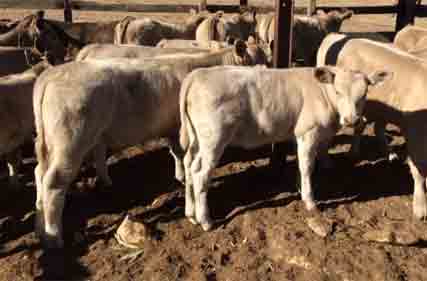 Selection indexes are a tool that can take the hard work out of deciding how much emphasis to place on each EBV in your or your bull buying clients’ selection decisions.
Selection indexes are a tool that can take the hard work out of deciding how much emphasis to place on each EBV in your or your bull buying clients’ selection decisions.
The Murray Grey selection indexes achieve this by modelling typical production systems where Murray Grey genetics are utilised, then evaluating the importance of each trait to profitability and applying the appropriate emphasis to each EBV in the selection index.
The process of selection index creation includes input from the breed society and an advanced piece of software called BreedObject.
The creation of selection indexes needs to consider all ways that a trait influences profitability, even if they are contradictory. Two examples of this are:
- Mature Cow Weight – According to the data submitted to BREEDPLAN, the average weight of a Murray Grey cow has increased by approximately 100 kg since the start of the century.
- This extra weight is created and maintained by an associated increase in feed requirements which represents a considerable cost to the production system.
- On the other side of the equation, BreedObject selection indexes do include the benefits realised from the increased value of larger cull cows, and the correlations between cow size and early growth.
- Milk – For BREEDPLAN, this trait is defined as the maternal genetic contribution of a dam to the 200 day weight of her calf. This is calculated from the calf’s 200 day weight and will include the cows mothering ability in addition to her milk supply.
- A higher Milk EBV therefore equals heavier calves at weaning.
- But it can be associated with poorer re-breeding performance and cow longevity, particularly when excess feed is not available.
In addition to considering all ways that a trait influences profitability, the BreedObject software also considers the timeframes between selection decisions and the expression of the traits. For example, maternal traits like calving ease daughters, mature cow weight, milk and days to calving will not be expressed for a bull until he has daughters that have progeny themselves. This demonstrates the importance of looking to the future regarding values (e.g. accounting for inflation) and market requirements (e.g. MSA emphasis) when designing selection indexes.
With all of the above in mind, beef producers should consider the following when using selection indexes.
- Selection Indexes are based on profit as it is consistent, unbiased, and quantifiable.
- Each selection index is designed for a specific production system and will order animals in a different order to other selection indexes. As a consequence, it is important to select the selection index that most closely matches either your or your client’s production system.
- Selection Indexes are only one of the selection tools that are available. Visual appraisal, pedigree, DNA test results and EBVs should also be utilised when making selection decisions.
- A best practice guide to animal selection is available here.
- The breed standard indexes were designed for typical Murray Grey production systems and thus the customisation of breeding objectives using other selection tools to suit individual farms and their management is understandable.
- Customised selection indexes are also available from breedobject.com
- The selection index EBV weighting graphs (available here) provide a good indication of which traits are important to record for BREEDPLAN.
